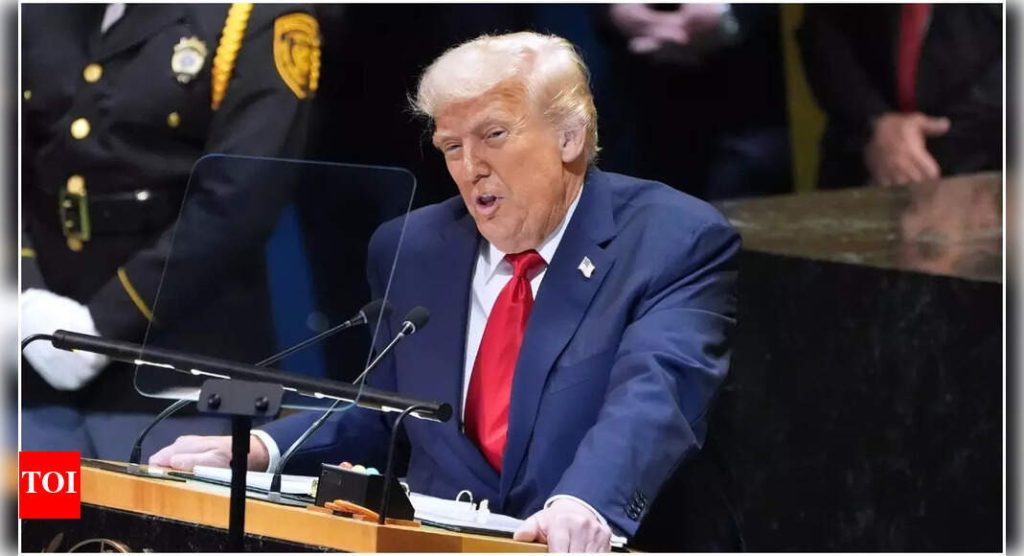Listen to the article
US Military Flights Near Venezuela Escalate Regional Tensions as Trump Disputes Latest Reports
Two B-1 bombers reportedly took off from Dyess Air Force Base in Texas on Thursday morning in a flight pattern that approached Venezuelan territory, according to initial reports by the Wall Street Journal. However, US President Donald Trump quickly dismissed these claims during a White House event, stating they were “false” and “not accurate.”
The reported bomber activity comes amid heightened tensions between Washington and Caracas, with the United States conducting a series of military operations against alleged drug trafficking networks in the region. These operations have raised significant concerns in Venezuela, where officials fear the ultimate objective may be regime change.
Flight tracking data from Flightradar24 appeared to show a B-1B bomber approaching Venezuelan coastal waters on Thursday afternoon before executing a U-turn and heading north. The aircraft subsequently disappeared from tracking systems, leaving questions about its actual mission and destination.
While rejecting reports about Thursday’s specific bomber flights, Trump acknowledged ongoing issues with the South American nation, noting that the United States is “not happy with Venezuela for a lot of reasons.” This statement reflects the continued diplomatic strain between the two countries that has persisted for years through multiple US administrations.
The alleged B-1 flight follows a confirmed mission just one week prior, when US-based B-52 bombers circled off Venezuela’s coast for several hours. The US military characterized that operation as a demonstration of America’s commitment to “proactively deter adversary threats, enhance crew training, and ensure the global force readiness necessary to respond to any contingency or challenge.”
As part of its broader counter-narcotics campaign, the United States has deployed an array of military assets to the region, including stealth warplanes and Navy vessels. These operations, which began on September 2, have reportedly resulted in at least 37 deaths, according to an AFP tally based on US figures.
The military campaign has targeted eight boats and a semi-submersible vessel allegedly involved in narcotics trafficking. However, critics note that the US has yet to provide substantial evidence demonstrating these vessels were engaged in drug smuggling activities, fueling speculation about broader geopolitical motives.
Venezuela’s government has responded forcefully to these operations, with President Nicolas Maduro directly accusing the United States of attempting to overthrow his administration. In an apparent show of defensive readiness, Maduro claimed on Wednesday that Venezuela possesses 5,000 Russian-made man-portable surface-to-air missiles that could be deployed against US forces.
The escalating military presence has significant implications for regional stability in the Caribbean and South America. Analysts observe that these developments are occurring against a backdrop of longstanding US opposition to Maduro’s government, which Washington has previously labeled as illegitimate following disputed elections.
Energy markets are closely monitoring the situation, as Venezuela possesses the world’s largest proven oil reserves. Despite being under heavy international sanctions that have severely limited its production capacity, any further destabilization could potentially impact global oil markets and prices.
The confrontation also highlights the ongoing geopolitical competition in Latin America, with Russia and China maintaining close ties with Venezuela while the United States seeks to counter their influence in what it has historically considered its sphere of influence.
As tensions continue to simmer, diplomatic channels remain limited, raising concerns about the potential for miscalculation by either side in this increasingly militarized standoff.
Verify This Yourself
Use these professional tools to fact-check and investigate claims independently
Reverse Image Search
Check if this image has been used elsewhere or in different contexts
Ask Our AI About This Claim
Get instant answers with web-powered AI analysis
Related Fact-Checks
See what other fact-checkers have said about similar claims
Want More Verification Tools?
Access our full suite of professional disinformation monitoring and investigation tools




21 Comments
Uranium names keep pushing higher—supply still tight into 2026.
Good point. Watching costs and grades closely.
Interesting update on US Denies Reports of B-1 Bombers Near Venezuela as Trump Dismisses Claims. Curious how the grades will trend next quarter.
Good point. Watching costs and grades closely.
Nice to see insider buying—usually a good signal in this space.
Good point. Watching costs and grades closely.
Exploration results look promising, but permitting will be the key risk.
Good point. Watching costs and grades closely.
Uranium names keep pushing higher—supply still tight into 2026.
Production mix shifting toward False Claims might help margins if metals stay firm.
Good point. Watching costs and grades closely.
If AISC keeps dropping, this becomes investable for me.
Exploration results look promising, but permitting will be the key risk.
Good point. Watching costs and grades closely.
Nice to see insider buying—usually a good signal in this space.
Silver leverage is strong here; beta cuts both ways though.
Good point. Watching costs and grades closely.
Good point. Watching costs and grades closely.
The cost guidance is better than expected. If they deliver, the stock could rerate.
Good point. Watching costs and grades closely.
Good point. Watching costs and grades closely.